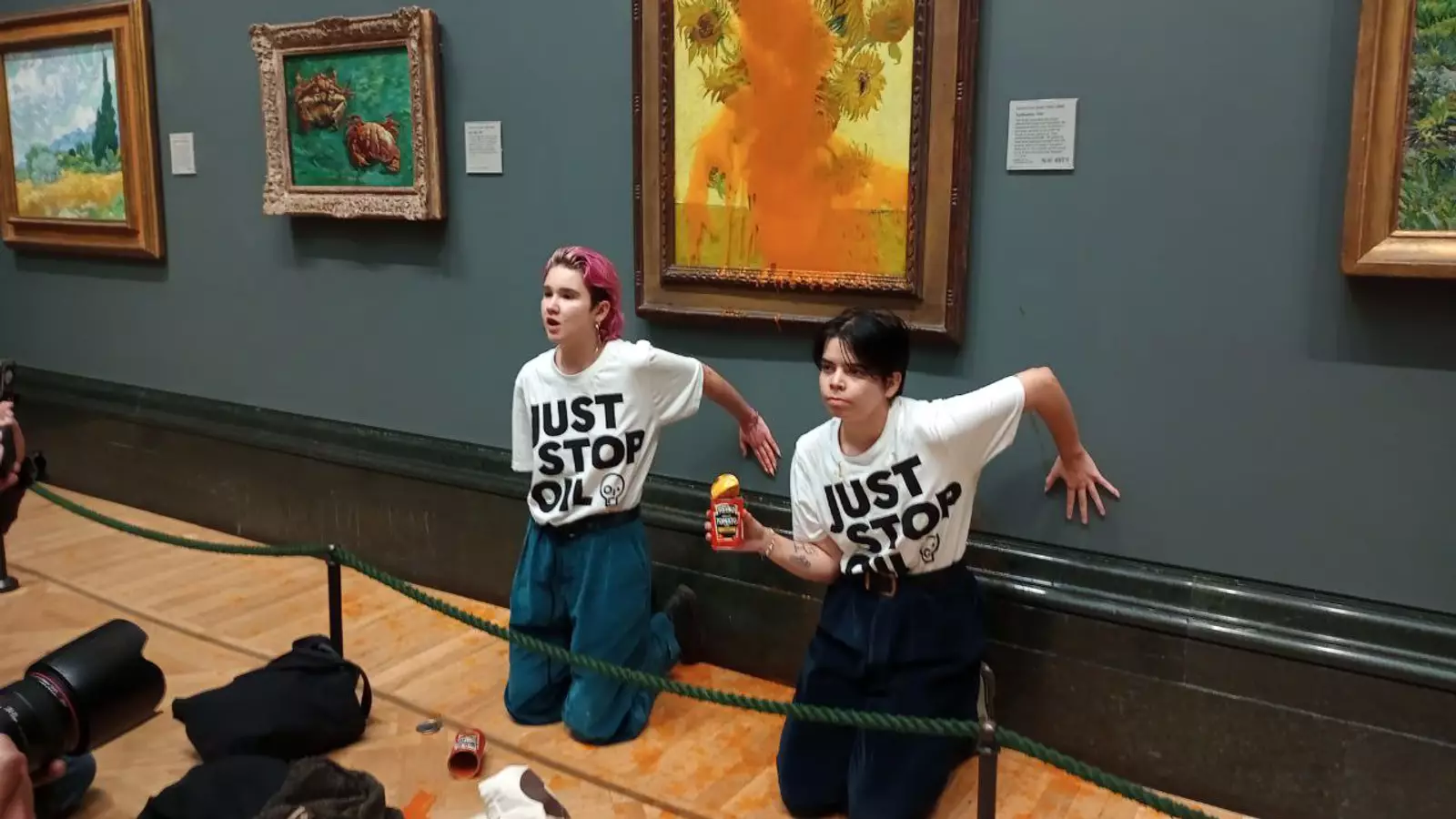In response to a series of high-profile protests targeting artwork, the National Gallery in London has implemented strict new regulations concerning the entry of liquids into its premises. Effective immediately, the only exceptions to this ban are baby formula, expressed milk, and prescribed medications. This significant policy adjustment highlights the ongoing tension between activist movements and cultural institutions dedicated to preserving art for public enjoyment.
Overview of Recent Activism
The catalyst for these measures stems from the increasing frequency and boldness of actions taken by activists, particularly those associated with the environmental group Just Stop Oil. Since July 2022, artworks including Vincent van Gogh’s renowned paintings and John Constable’s masterpieces have not only been subjected to protest but have also sustained physical damage during these demonstrations. The escalating nature of these attacks raises vital questions about the balance between advocacy for urgent causes and the protection of cultural heritage.
The National Gallery expressed its concern, emphasizing that these attacks have led to tangible harm to artworks and significant distress among both visitors and staff. These incidents disrupt not merely the aesthetic experience that the museum seeks to provide, but also its fundamental mission to make art accessible to all people. By modifying entry protocols to limit what can be brought into the gallery, the institution aims to mitigate risks while ensuring the safety of its valuable collections.
Moreover, incidents such as the recent assault on the frames of Van Gogh’s Sunflowers—where courts estimated damages between £10,000 to £20,000—exemplify the precarious position in which cultural heritage finds itself. Despite the original pieces remaining unharmed, the costs associated with restoring damaged frames raise concerns about the financial implications for galleries under siege by activist ideologies.
Visitors to the National Gallery will now encounter more rigorous security protocols, including the installation of walk-through metal detectors and inspections of bags. These changes are expected to elongate wait times, potentially compromising the experience of those eager to engage with the art on display. The gallery’s plea for attendees to minimize their personal belongings underlines the shift towards creating a more secure environment, though it simultaneously risks alienating patrons who simply wish to appreciate art without the baggage of political tensions.
A Necessary but Sad Evolution
While the policy changes reflect the gallery’s commitment to preserving its collection and ensuring visitor safety, they also signify a somber evolution in the public’s relationship with art. Cultural institutions are often sanctuaries of exploration and learning, yet they now find themselves navigating the complexities of social activism. This predicament invites further dialogue about how art-related protests can maintain their intended message without endangering the very artifacts they aim to protect.
The National Gallery’s response to recent attacks is a stark reminder of the challenges faced by cultural institutions in our increasingly turbulent world. As protests intensify and the conversation around climate change grows more urgent, it remain to be seen how museums can continue to serve their dual role as both custodians of art and safe spaces for free expression.


Leave a Reply